TravelThe British Antarctic Survey employs various ways of travelling to its base, Rothera Field Station on the Antarctic Peninsula, including aircraft and ships from either Chile or The Falklands. This collection of images shows Dash 7 flights from Punta Arenas in Chile, as well as internal Antarctic flights with Twin Otters. We also show images of getting around in the field, including man-haul sledging. |
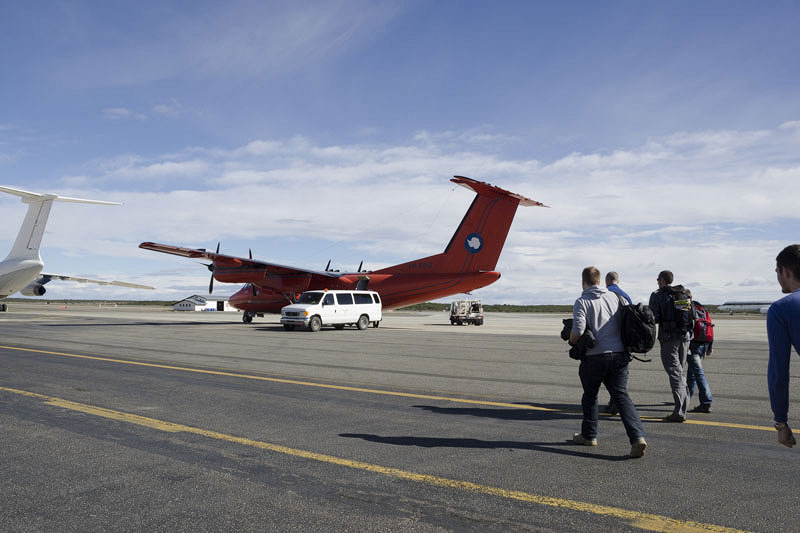 The British Antarctic Survey’s four-engined de Havilland Dash 7 provides a direct 4-hour flight from South America to Rothera Station on Adelaide Island on the west side of the Antarctic Peninsula. Scientists walk to the aircraft at Punta Arenas airport in Chile. | 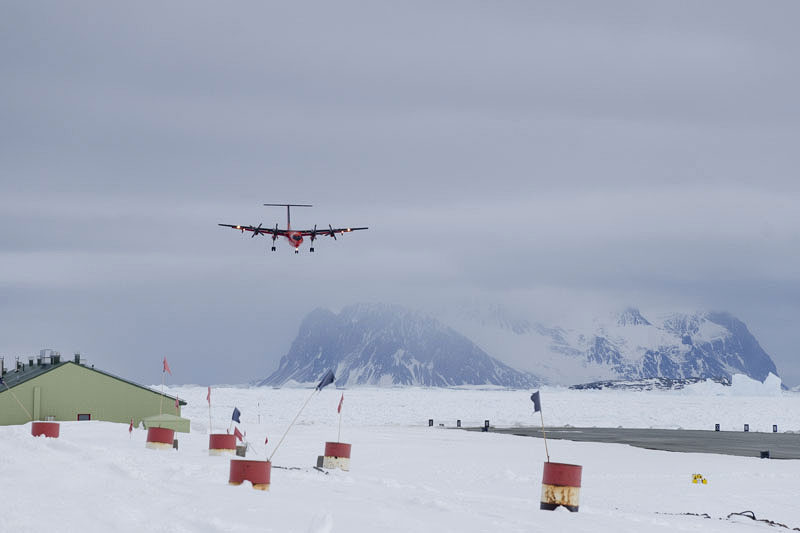 In marginal weather conditions, the Dash 7 approaches the hard runway at Rothera. | 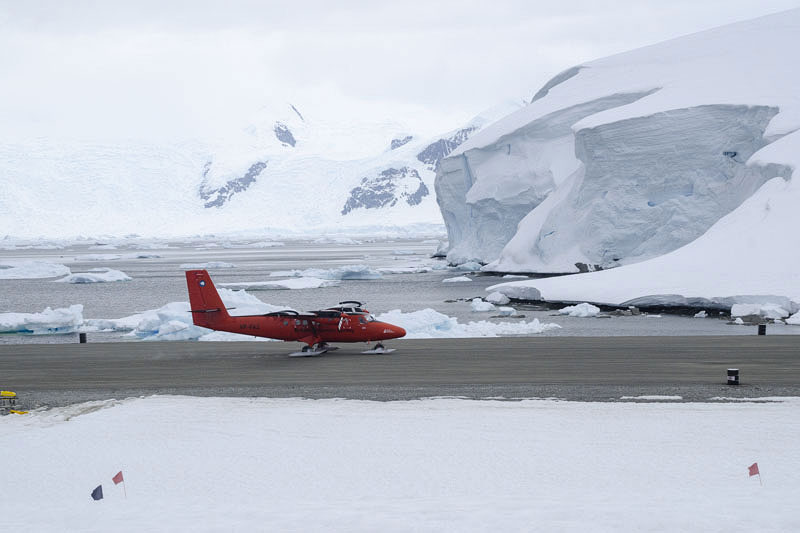 Against a backdrop of icy mountains and Wormald Ice Piedmont, a de Havilland Twin Otter aircraft prepares to take off from the Rothera runway. With a payload of 1300 kg, ski-equipped Twin Otters are the principal workhorses for transporting scientific parties into the field. | 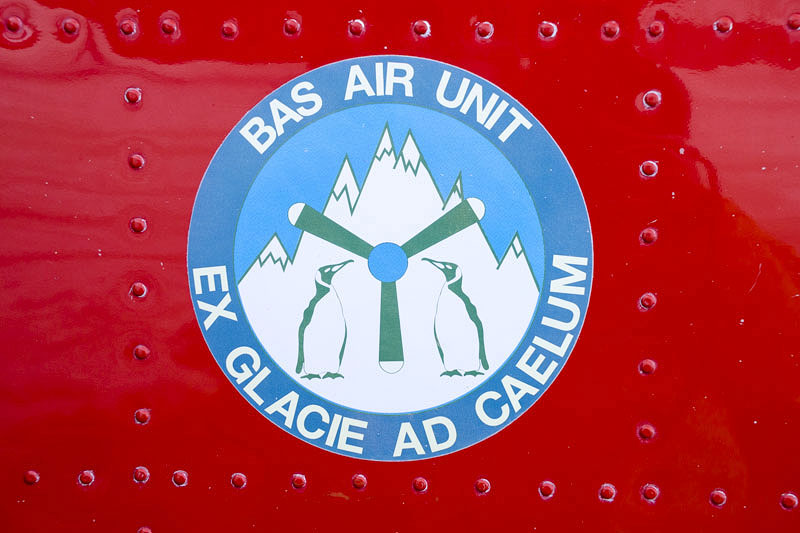 The logo and motto of the British Antarctic Survey (BAS) air unit on a Twin Otter. |
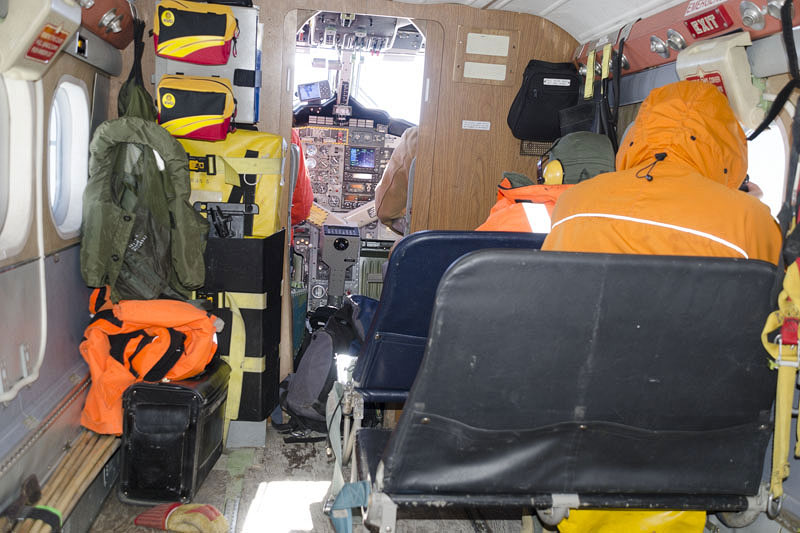 Traditionally, the Twin Otter carries freight, fuel, as well as passengers. In our case, a single flight carried our team of 3, camping gear, food, sledges, scientific equipment and, on the return, geological specimens. | 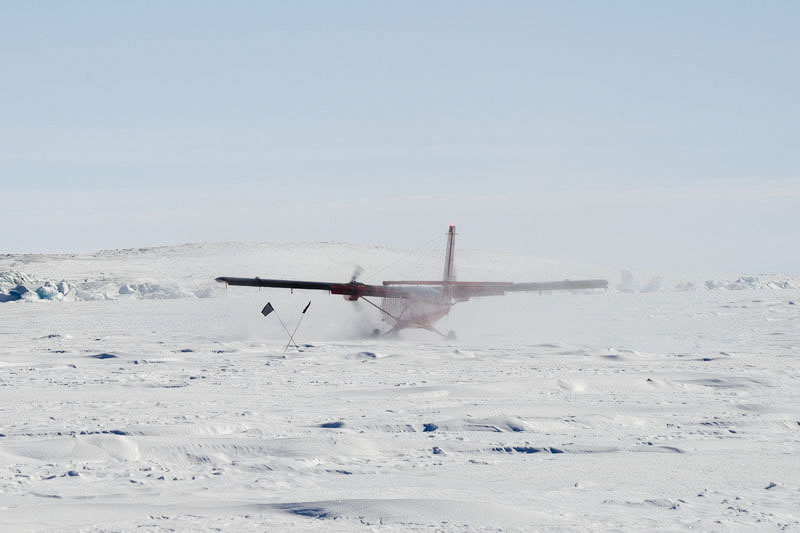 After a month camping at the edge of the George VI Ice Shelf, a Twin Otter returns to pick us up, landing in a cloud of snow on the rough surface. The smoothest possible airstrip was marked out by Ian Hey, our field general assistant (mountaineer). | 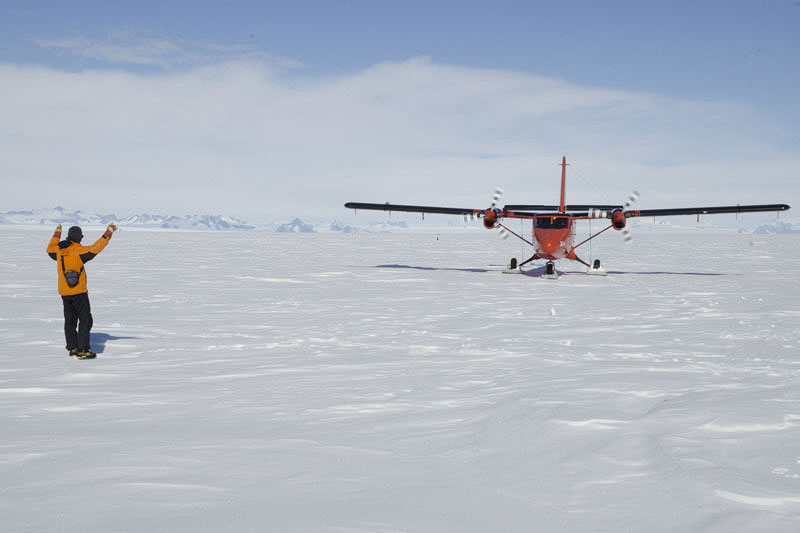 The Twin Otter is here being guided by Ian Hey to our depot on the ice shelf. | 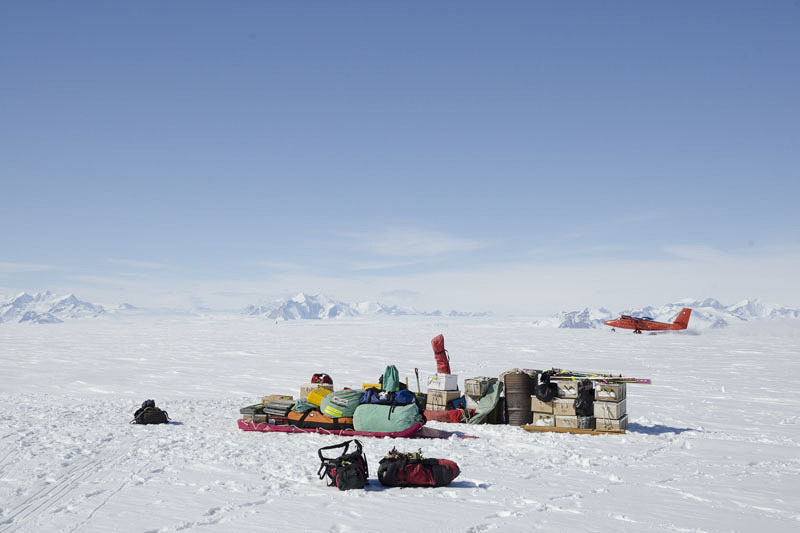 Our depot was 4 km from our eventual camp on the ice shelf, and required several man-hauled sledging trips to the adjacent land. The distant mountains are about 30 km away. |
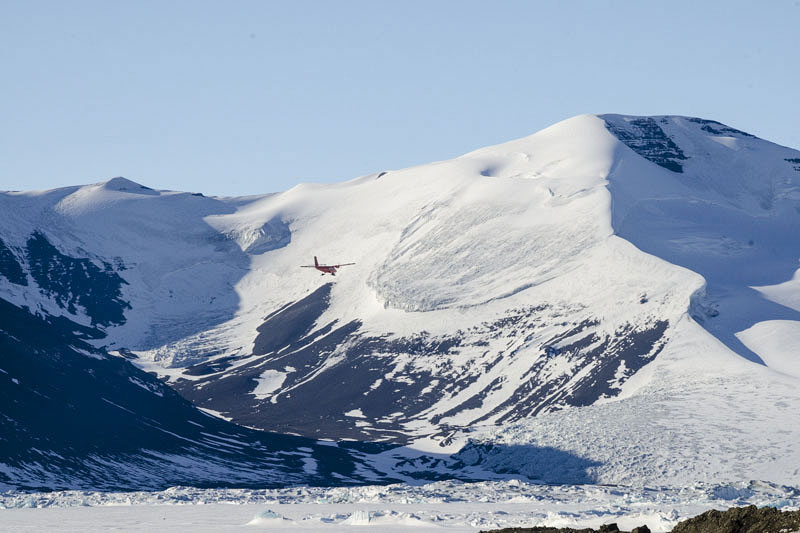 Twin Otter encircles our camp with the mountains around Ablation Lake as a backdrop. | 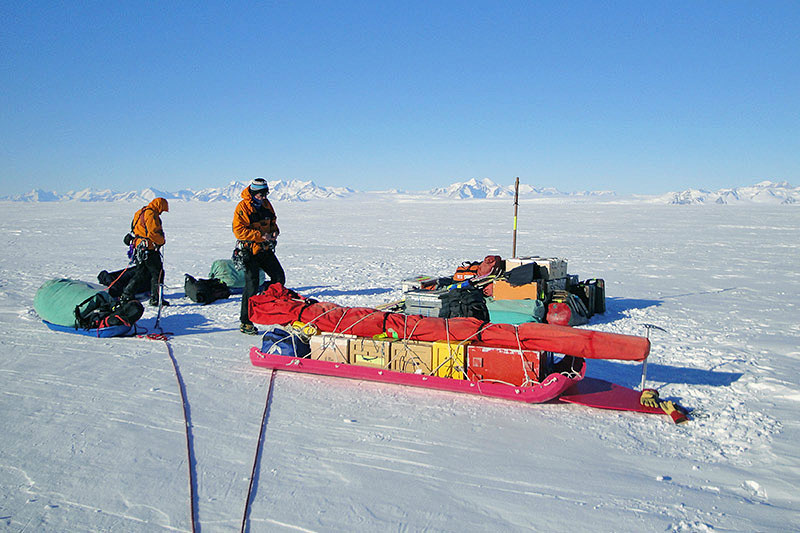 Boat-shaped fibreglass sledges loaded for transferring kit to land from the ice-shelf depot. The long red item on top of the boxes in the nearest sledge is a 3-person pyramid tent. | 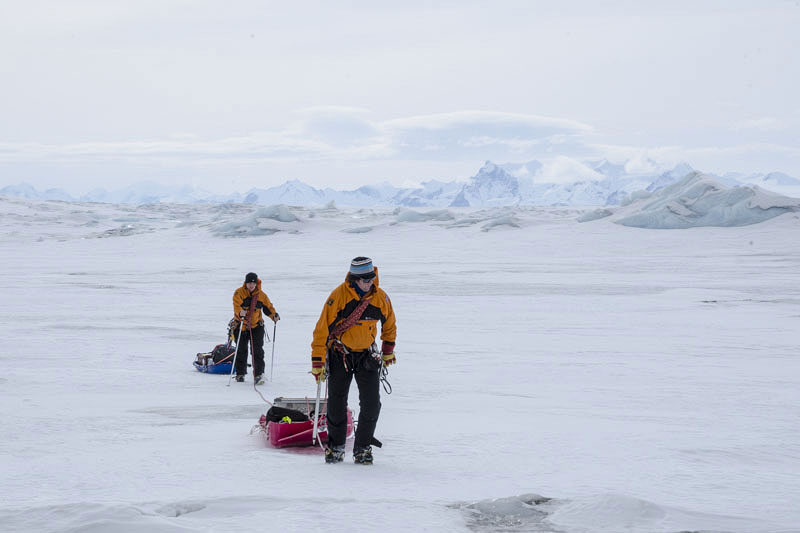 Sledges were man-hauled because Ablation Lake, where our camp was located, is in a Specially Protected Area, and motorized transport is banned. | 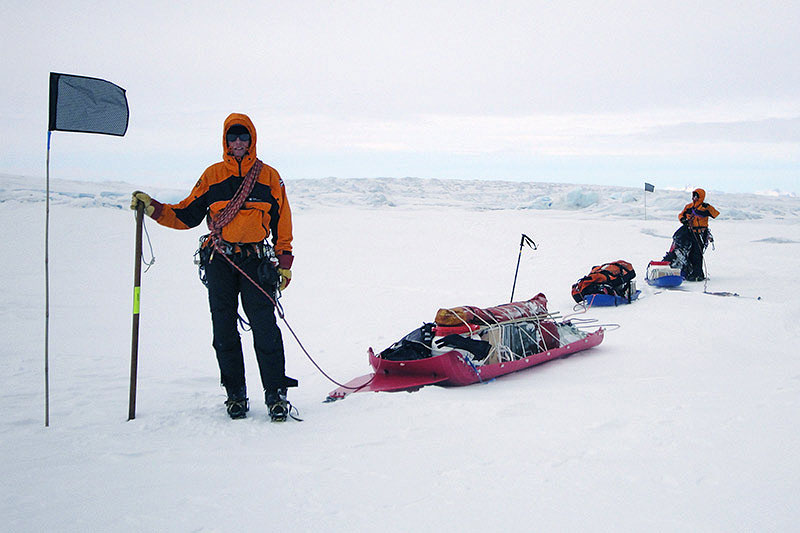 The route took us through a series of rough ice topography of ridges and valleys, and with limited options it was necessary to plant black marker flags for route finding in bad weather. |
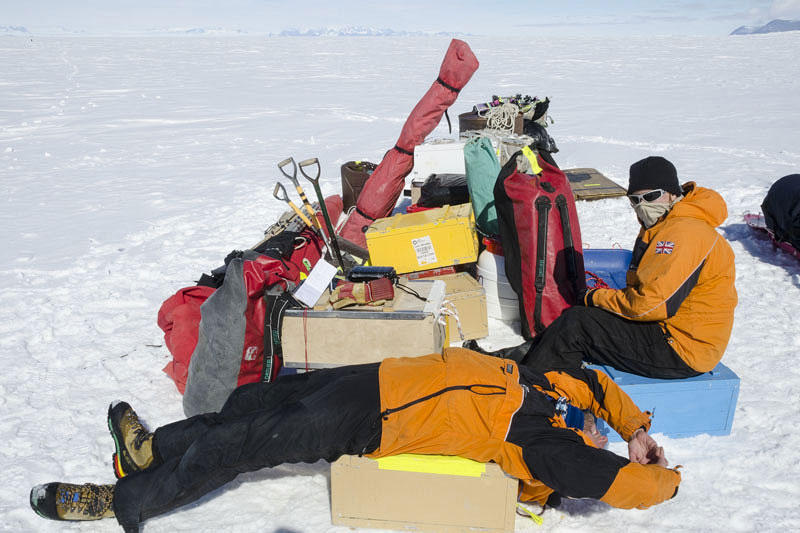 Man-hauling is one of the original modes of travel, but can be exhausting work. Here our depot has just been re-assembled on the ice shelf, ready for the flight to our next destination. | 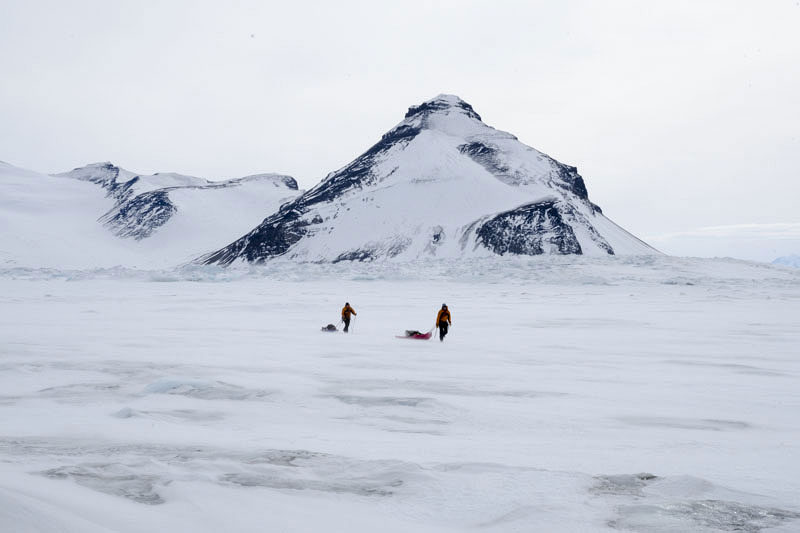 We also used small sledges for day-to-day travel over snow-covered terrain, as here on permanently frozen Ablation Lake. This made transport of heavy rucksacks with geological specimens much easier. | 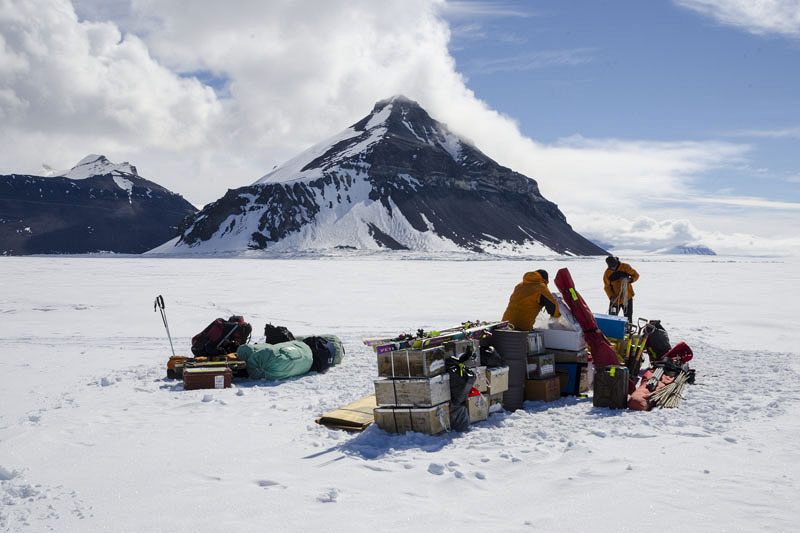 After a month of sampling rocks and sediment, the size of our depot for return to Rothera reached impressive proportions. | 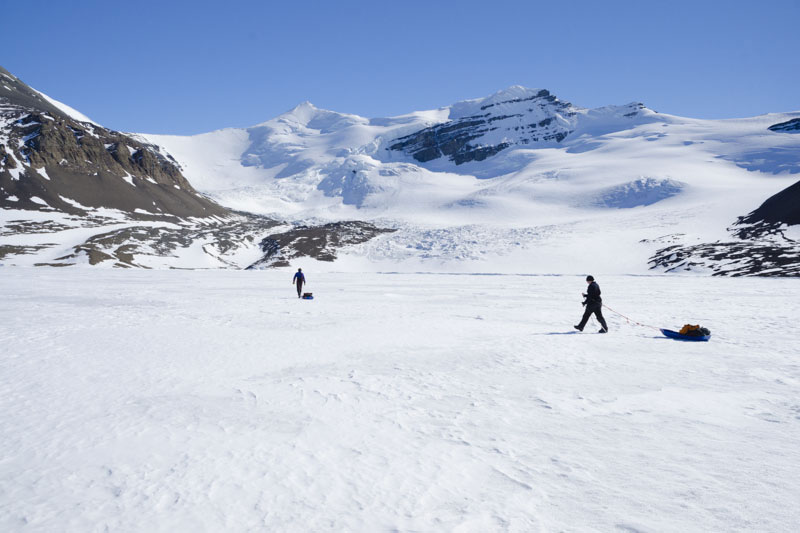 A pleasantly sunny day, as here on Ablation Lake, makes our sledging trip a joy, especially with early morning hard surfaces. However, the return trips were always harder with soft surfaces and a load of rock. |
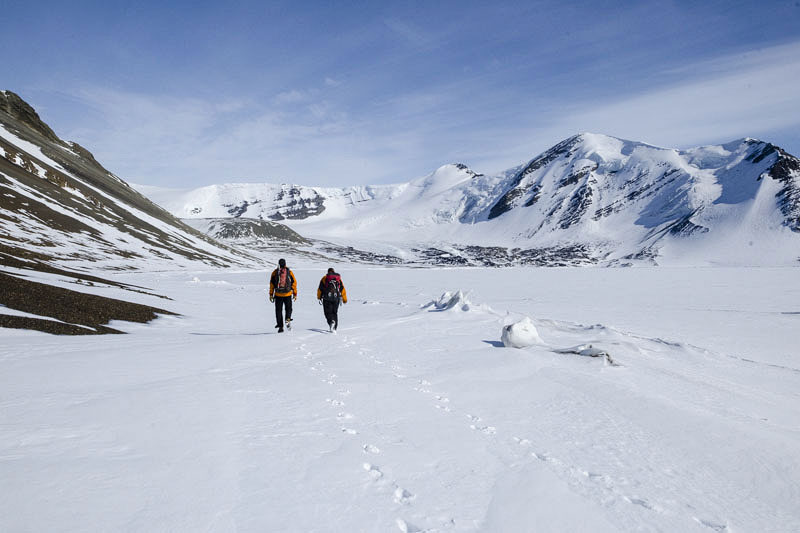 Other ways of getting around are on foot, as here near the edge of Ablation Lake. We used this method when making frequent forays to the adjacent hillsides. | 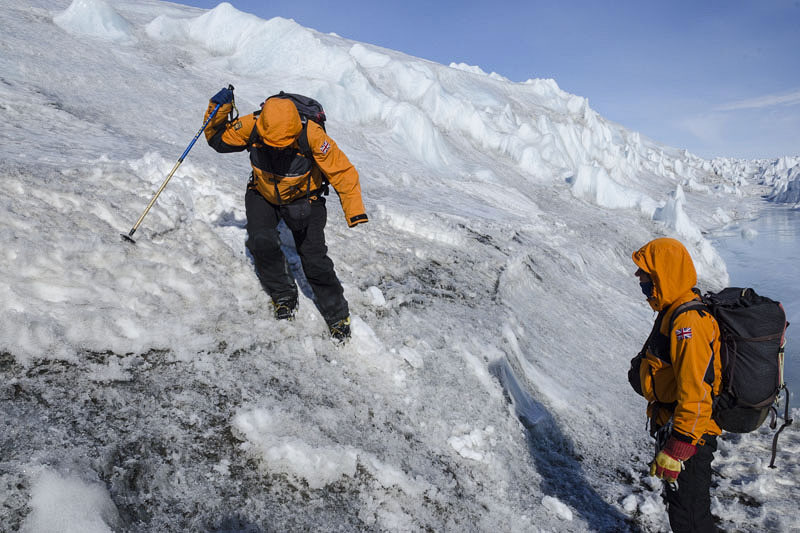 Much of the ice shelf surface on which we worked was steep and rough, so cutting steps and using crampons was essential. | 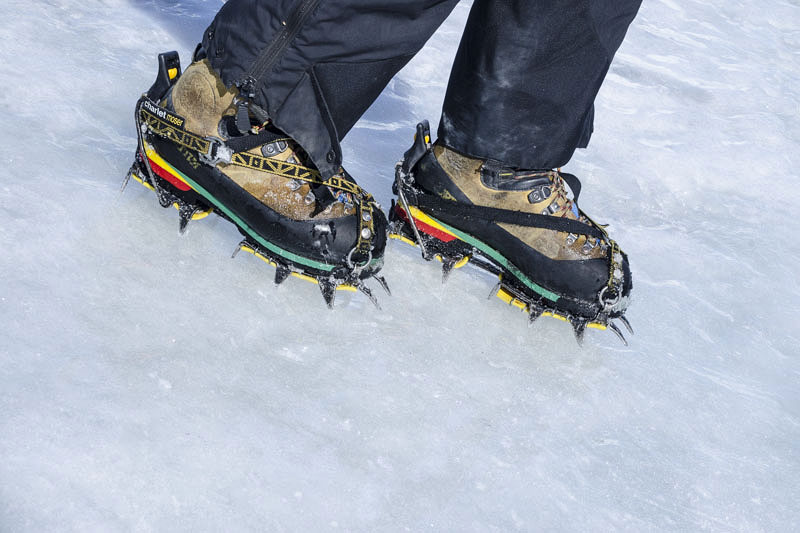 12-point crampons fixed to rigid-soled leather boots were our preferred footwear on steep ice when the temperatures were not to low. Otherwise we used double plastic boots in temperatures below -10°C. | 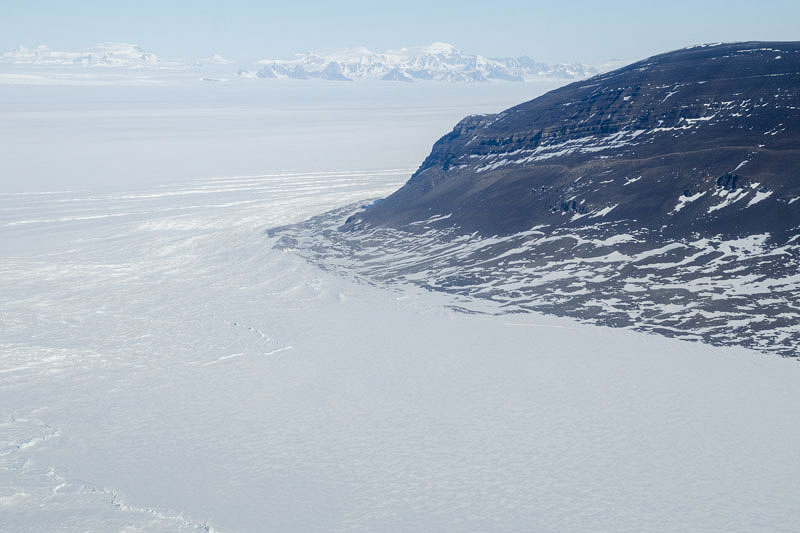 The rough ice of George VI Ice Shelf (upper left) contrasts with the smooth ice of Ablation Lake (lower right), as seen from the air. Our camp was on land close to the junction between the two. |
| Photos Michael Hambrey, November and December 2012. |